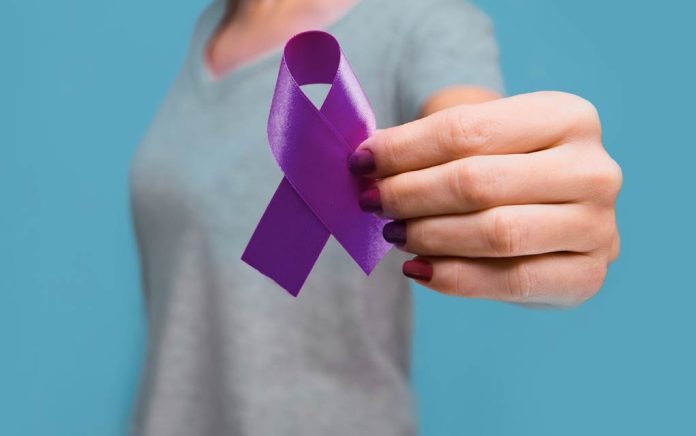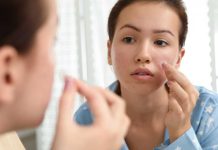
(HealthyResearch.com) – Most of us would like to think we’re doing all we can to avoid a run-in with the Big C. While some risk factors cannot be controlled, there are things we can do to lower the odds. Minimize your cancer risks by being mindful of the following 17 factors.
- The Produce in Your Diet: Including more fruits and vegetables in your diet can reduce your total cancer risk by giving you a broad array of antioxidants anti-inflammatory compounds, and other nutrients that may protect against different kinds of cancer.
- The Amount and Types of Meat You Eat: Eating more than 18 ounces per week of red and processed meats can increase your chances of developing cancer — particularly colorectal cancer. Reduce your red meat consumption by replacing it with poultry, which doesn’t appear to carry the same risks, or with fish, which might actually help protect your digestive system from cancers if eaten regularly.
- Where You Live: Your locale could have an influence on your cancer risk. According to MarketWatch, air pollution is the greatest environmental threat, although the accessibility of gyms, supermarkets, and natural space may lower the risk. Where you live can also affect the types of contaminants in your water, some of which may be carcinogenic.
- Your Genetics: Up to 10% of cancers are influenced by inherited mutations in the genes. Inheriting one of these mutations doesn’t guarantee cancer, but it does increase the odds. People at risk of having inherited one or more of these genes should seek genetic counseling for direction.
- Your Gender: Men are 20% more likely to develop cancer than women — and they’re 40% more likely to die from it, especially when the cancer involves the lungs, stomach, colon, or rectum. Females are at a higher risk of thyroid cancer, however. Hormones may play a role in these differences, although their role is not well understood.
- Your Occupation: Countless jobs expose workers to toxic chemicals, putting them at risk for certain cancers. Up to 6% of cancers are believed to be the result of workplace exposure. These types of cancers may appear as clusters in certain regions.
- Your Sexual History: Some STDs can increase specific cancer risks. The human papillomavirus (HPV), most commonly associated with genital warts, can cause cervical and penile cancer, as well as cancers of the anus, throat and mouth. Hepatitis B and C can lead to liver cancer. HIV can increase the risks of cervical cancer, lymphomas and sarcomas.
- Other Infections: Have you ever had Epstein-Barr virus (EBV)? Up to 90% of adults have had EBV at some point in their lives, many without symptoms. Did you know just having had the virus increases your chances of developing stomach cancer and some forms of lymphoma? EBV is just one of several known oncoviruses — viruses capable of causing cancer.
- How Much You Drink: Alcohol increases the risks for cancers of the mouth, throat, larynx, esophagus, colon, rectum and liver. In women, it also increases breast cancer risks. To limit your risk, the CDC recommends women limit themselves to one alcoholic drink per day, men to two.
- Sun / UltraViolet Radiation Exposure: The sun’s warm rays might feel blissful, and bronzed skin can give you a seemingly healthy glow, but the effects of tanning aren’t worth it. Not even tanning beds are safe. In fact, just one session in a tanning booth before the age of 35 can increase your melanoma risk by a whopping 75%.
- Radiation Exposure: X-rays are known to cause cancer, although the risk appears to be dose-dependent. For this reason, keep your exposure to a minimum. A protective shield may reduce the amount of radiation that reaches the rest of your body. Be aware that CT scans can dose up to 200 times more radiation than x-rays with each scan.
- How Often You Exercise: The American Cancer Society has identified 13 different types of cancer that regular exercise may help prevent, including breast, esophageal, kidney, and lung cancers. If you’re able, make it a goal to meet the recommended 150 minutes of moderate exercise or 75 minutes of intense exercise each week. You’ll reduce your risk and improve your overall health in the process.
- Your Immune Health: The immune system plays a vital role in cancer prevention. People with compromised immune systems, such as HIV patients and people taking immunosuppressants, have the biggest risk. Keep your immune system as healthy as possible by eating a balanced diet, not smoking, moderating alcohol use and getting plenty of sleep.
- Your Stress Levels: Got stress? Research has linked stress hormones to cancer. Try reducing yours with mindfulness meditation, which may also help reduce the effects of anxiety and depression.
- Your Weight: The National Cancer Institute has found connections between obesity and the risks of numerous types of cancer. This may be related to weight-related inflammatory responses, metabolic changes and differences in gut microbes. Being overweight also reduces positive cancer prognoses, often reducing patients’ quality of life, increasing the possibility of cancer recurrence and lowering the survival rate.
- Tobacco Use: It doesn’t matter if you smoke it, chew it, filter it or vape it, tobacco use is responsible for more cancer-related deaths than all other causes. Quitting upon a cancer diagnosis can improve survival odds.
- Your Age: Advancing age is the biggest risk factor for cancer. Cancer can occur at any age, and although a few types are even more common in children than adults, overall, you’re 4-7 times more likely to develop some form of cancer after the age of 65 than between the ages of 30-64. The average age of cancer diagnosis is 66.
Nothing in life is guaranteed, especially when it comes to cancer, but you can tip the odds in your favor by making healthy lifestyle changes. The choices you make could mean the difference between life and death.
~Here’s to Your Health & Safety!
Copyright 2021, HealthyResearch.com
















